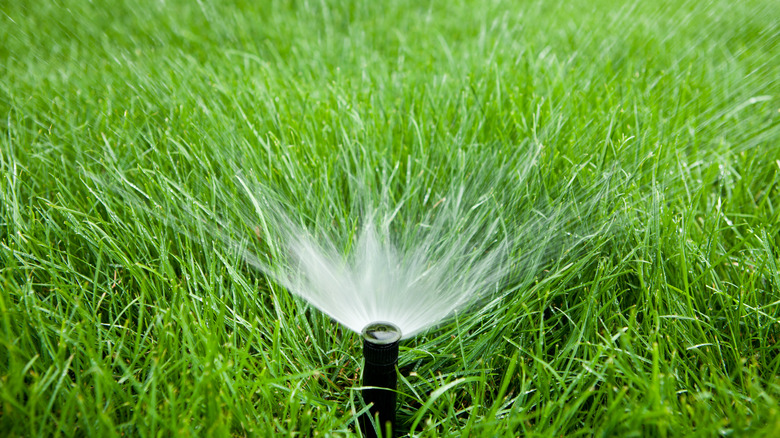Getting grass seed to grow in your yard can sometimes be tricky, especially if you live in a hot and dry environment or have uneven ground. Hydroseeding might be the best option if you have a lot of ground to cover or want to mix several types of seeds. Unlike traditional grass planting, where you distribute seeds, water them, and then fertilize them, hydroseeding does it all at once with a hose. It’s a great way to customize your lawn and give it a healthy start.
Keeping your yard maintained after hydroseeding is important because the young seedlings are tender and might not make it if they get too stressed. The care protocol is slightly different (and possibly easier) than the standard since mulch and fertilizer are applied with the seeds — they will germinate faster and won’t need to be fertilized right away. With this in mind, here are the steps you should take to care for your freshly-hydroseeded lawn.
Water your lawn regularly

Water is the most important component of a successful hydroseeded lawn. Grass seeds will only germinate when the conditions are just right. Seeds are more likely to germinate if the ground is cool and moist. Seeds with hulls may take longer to germinate since they keep the seeds safe until it’s time to sprout, so moisture will make an even bigger difference for hulled seeds.
Water your newly seeded lawn up to three times per day, depending on the weather. If you planted seeds in the fall — which is usually the best time of year to do so — then you may only need to water once. If you have rainy weather, you may not need to water at all. If you planted in spring or live in a hot and dry climate, you’ll need to water more often, especially if there’s a heatwave. Avoid watering when the temperature is above 85 degrees Fahrenheit with high humidity, as this can create a breeding ground for fungal diseases or scorch your grass.
Keep the top layer of soil moist for the first couple of weeks so the seeds have consistent moisture access. Water lightly for about five minutes so you don’t flood the area. Stop watering if you notice puddling, as that can wash away seeds and create a patchy area until the grass is mature enough to spread.
When to mow and fertilize your hydroseeded lawn
After your grass seeds have sprouted and established, they’ll eventually need fertilizer and a haircut. Avoid walking on the lawn as much as possible until the little blades are tall enough to mow over. Don’t walk on or drag hoses over new seeds. Seedlings can handle light foot traffic, but wait at least six weeks before you try a game of touch football.
The grass should be ready to mow once it’s about 3 inches tall. Mow slowly so the wheels don’t scrape across the ground, and cut slowly with a rotary mower. Don’t remove more than 1/3 of the grass’s total height; if the grass is 3 inches tall, you should only cut off an inch. Cutting off too much length can cause the grass to lose some of the shade it creates itself, making it more susceptible to getting too hot and dry.
Wait one month from the time of planting before you start applying fertilizer. Hydroseeding includes fertilizer in the initial application, so you need to wait to prevent the risk of overfertilizing. Choose a fertilizer that’s high in nitrogen since nitrogen affects plant growth.
Don’t use a fertilizer with weed killer right away, as the chemicals will be too much for the grass seedlings. Wait three or four months before you start controlling weeds. The grass should choke out weeds as it grows, but you can remove weeds by hand when the grass is established, if necessary.